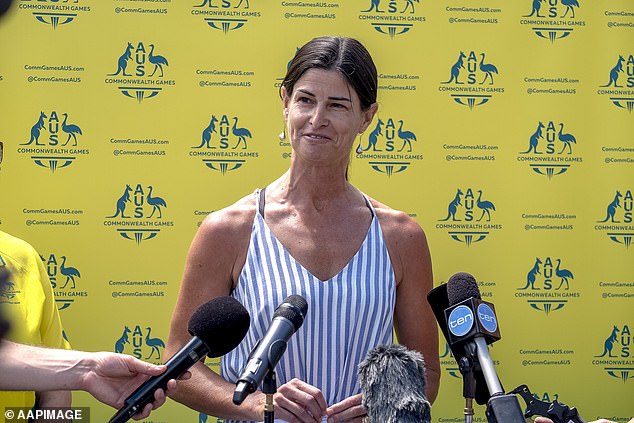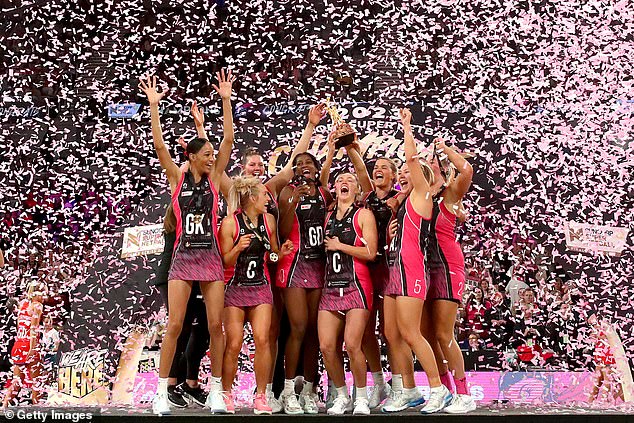Aussie netballers will finally be paid after ending year-long stalemate with Netball Australia and agreeing to new Collective Player Agreement until 2026
- I have not received any payment since October 1, when contracts expired
- Netball Australia's first proposed CPA rejected
- We have now reached an agreement with the governing body
The long-running industrial dispute plaguing Australian netball has finally come to an end, with the announcement of a new collective player agreement that will be extended until September 2026.
The years-long pay dispute resulted in players boycotting the Australian Netball Awards and Netball Australia threatening legal action before peace was found late on Friday.
After four hours of negotiations, terms were finalized, ending a saga that had seemed inevitable since an emotional press conference with Australian Netball Players' Association president Jo Weston and CEO Kathryn Harby-Williams.
During that press conference, Weston broke down in tears and revealed that some professional netballers had to live in their cars after pay was stopped from October 1.
Australian Diamonds players faced an uncertain future after the years-long pay dispute

Kathryn Harby-Williams, the former Australian netball captain and current CEO of the Netball Players' Association, has fought hard to get players paid fairly

Super Netball players will now enjoy regular pay increases and a share of the revenue generated by the league
The subsequent meeting on Friday included virtual participation from Prime Minister Bill Shorten and a reaffirmation of the 21 unanimous resolutions presented by the players on Thursday.
A crucial aspect of the agreement revolves around a revenue sharing arrangement for sponsorships that exceed expectations.
Notably, this arrangement is based on terms dictated by the players and is not dependent on the financially strapped Super Netball league breaking even. However, both sides acknowledged that Netball Australia's significant debt must first be repaid.
Another critical point, missing from the previous offerings from Netball Australia (NA) and Super Netball (SSN) clubs, was a consensus on a new commercial model. This model includes concessions from NA on issues such as the use of player intellectual property (IP), a demand that the players meet.
Previously agreed terms include an 11 percent increase in basic salaries over three years, a 3 percent annual increase in private health insurance contributions and retroactive payment from October 1, the date when all players were out of contract and not were paid.
In addition, there will be an immediate 10% increase in training partner fees in 2024, followed by a three percent increase each subsequent year.
Each SSN club now has the opportunity to nominate an 11th player from its wider squad, who will be eligible for selection under a six-month minimum salary contract of $22,000, depending on age, matches played, Australian representation and potential exemptions.
The maximum total base salary payment, which is currently $655,000 and will reach $690,995 next year, will rise to $742,212 by 2026.
The minimum payments will increase from the current $590,000 to $611,300 and ultimately $655,836. Part A, on marketing-related deals, will immediately be doubled to a maximum of $40,000 per player and $160,000 per team.
Other notable initiatives include the establishment of a Professional Netball Committee with formal representation from the Australian Netball Players' Association, with the aim of jointly exploring new opportunities for the advancement of athletes and strengthening the competition.
A new financing and governance model for the Players Association is also in the works.
